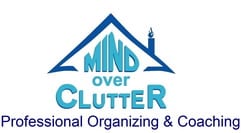Latest Blog Posts
Some people say they don’t need very much sleep. Recently a super sleep gene was found. Only about 5% of people have it. It allows their body to cycle through the REM and non REM sleep cycles more quickly so the person feels more rested in a shorter amount of time. Unfortunately, about 30% of people report only needing 4 hours of sleep a night. So about 25% of those people would benefit from more sleep. Harold Taylor is a time management expert. He publishes a newsletter, Taylor Time Newsletter. The August edition has a great article on sleep and time management.
by Harold Taylor Work Smarter is more about Timing then Technology
What are sleep cycles?
When we sleep, we do so in approximately 90-minute cycles throughout the night, each cycle consisting of five stages – four stages of non-REM sleep (about 75% to 80% of our sleep time) and one stage of REM sleep (about 20% to 25% of our sleep time.)
The first REM stage begins about 90 minutes into our sleep and then the cycle begins again about every 90 minutes until we wake up.
Scheduling your worktime and projects
What most people don’t realize is that these 90-minute “sleep cycles” run through the entire day. We obviously don’t sleep during the day if we have slept sufficiently during the night, but the cycles become waves of high and low energy and are referred to as ultradian rhythms. Our internal clocks are critical to our personal performance as well as our health and well-being. Our body has many internal “clocks,” each operating independently but in constant communication with one another.
In a few of my books and articles and all of my seminars, I talk about scheduling projects in 90-minute segments.I recommend that people find their high energy time in the morning and start working on their top priority items for about 90 minutes Share on X
I have always known that I was more productive working in sixty or ninety-minute chunks of time, and I suggested all kinds of reasons for it – such as it was the maximum amount of time I could work without having to be interrupted or even interrupting myself. But I never knew until recently that ultradian waves of high and low alertness had actually been identified. One study of young violinists back in 1993 revealed that the best violinists all practiced the same way – in the morning in three segments of no more than 90 minutes with a break between each segment. The same thing was noticed among other musicians as well as athletes, chess players and writers.
I recommend that people find their high energy time in the morning and start working on their top priority items for about 90 minutes. Then take a break of about 15 or 20 minutes before starting the next task. Following the second 90-minute work session there should be a break of at least an hour before resuming. (This could be lunch and a brief walk.) It will take time to get into the right pattern. You have to listen to your body to determine the best start time and the actual duration of your high-alertness cycle.
Breaks are important too
You don’t necessarily have to take a coffee break, go for a walk or do stretches during your breaks as long as you switch to a different type of task. There are three basic types of activity – mental, physical and emotional. If you have been working on a mental task requiring intense concentration such as writing a business proposal, a switch to cleaning your work area, filing or checking messages on Twitter or Facebook for twenty minutes might be just as relaxing to the mind as a twenty-minute chat at the coffee center.
Use your natural body rhythms to be more efficient
The problem is that people have been fighting their natural body rhythms by feeding it coffee and other stimulants and therefore developing inefficient working habits. They have likewise short-circuited their natural sleep cycles with late nights, artificial lighting and stimulating electronics.
Contact www.taylorintime.com to subscribe to his newsletter
Virtual organizing allows me to support your organizing projects by providing planning, coaching and mentoring while both remaining safely at home.
Book a 30 minute complimentary virtual organizing assessment to help develop your productivity. https://mindoverclutter.as.me/virtualorganizingassessment
 Julie Stobbe is a Trained Professional Organizer and Lifestyle Organizing Coach who brings happiness to homes and organization to offices, virtually using Zoom. She has been working with clients since 2006 to provide customized organizing solutions to suit their individual needs and situation. She uses her love of teaching to reduce clutter, in your home, office, mind and time. She guides and supports you to be accountable for your time, to complete projects and reach your goals. If you’re in a difficult transition Julie can coach you to break-free of emotional clutter constraining you from living life on your terms. Online courses are available to help instruct, coach and support your organizing projects. Get started by downloading Tips for Reorganizing 9 Rooms.
Julie Stobbe is a Trained Professional Organizer and Lifestyle Organizing Coach who brings happiness to homes and organization to offices, virtually using Zoom. She has been working with clients since 2006 to provide customized organizing solutions to suit their individual needs and situation. She uses her love of teaching to reduce clutter, in your home, office, mind and time. She guides and supports you to be accountable for your time, to complete projects and reach your goals. If you’re in a difficult transition Julie can coach you to break-free of emotional clutter constraining you from living life on your terms. Online courses are available to help instruct, coach and support your organizing projects. Get started by downloading Tips for Reorganizing 9 Rooms.
Contact her at julie@mindoverclutter.ca
Click here to learn more about her online course Create an Organized Home.
Twitter – Facebook – Facebook group Organizing Mind and Space



